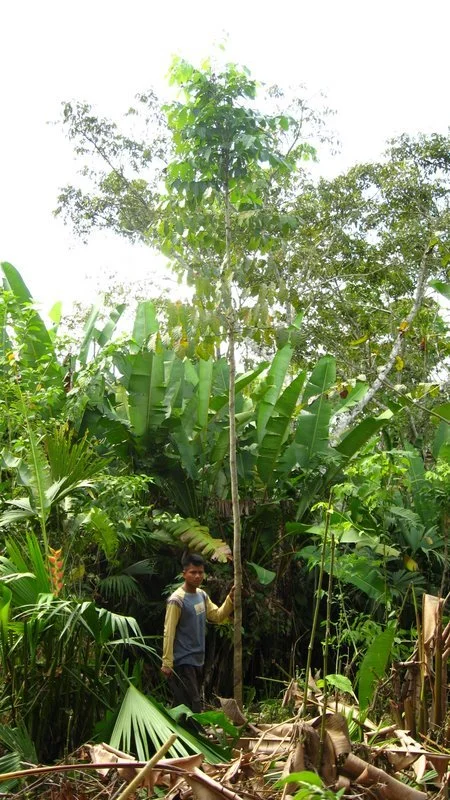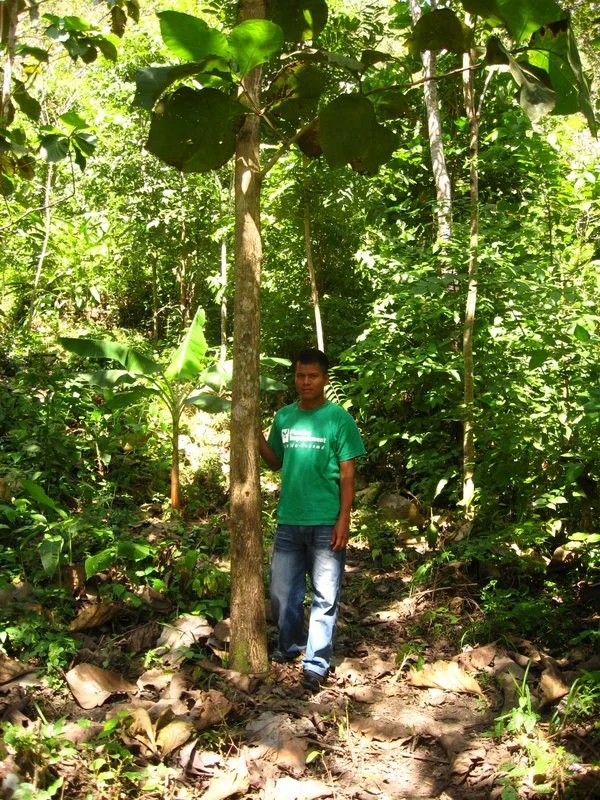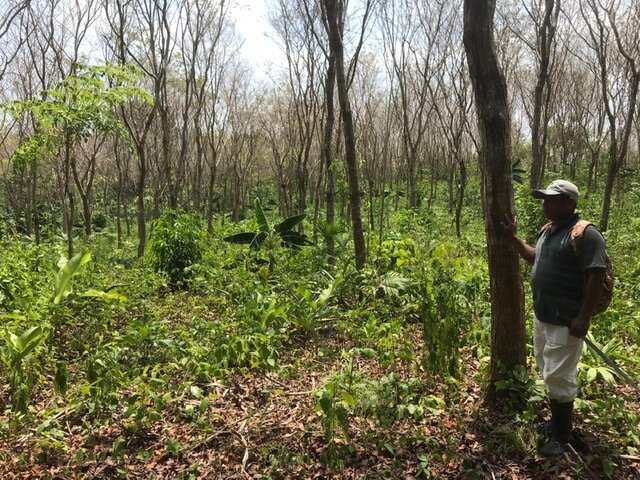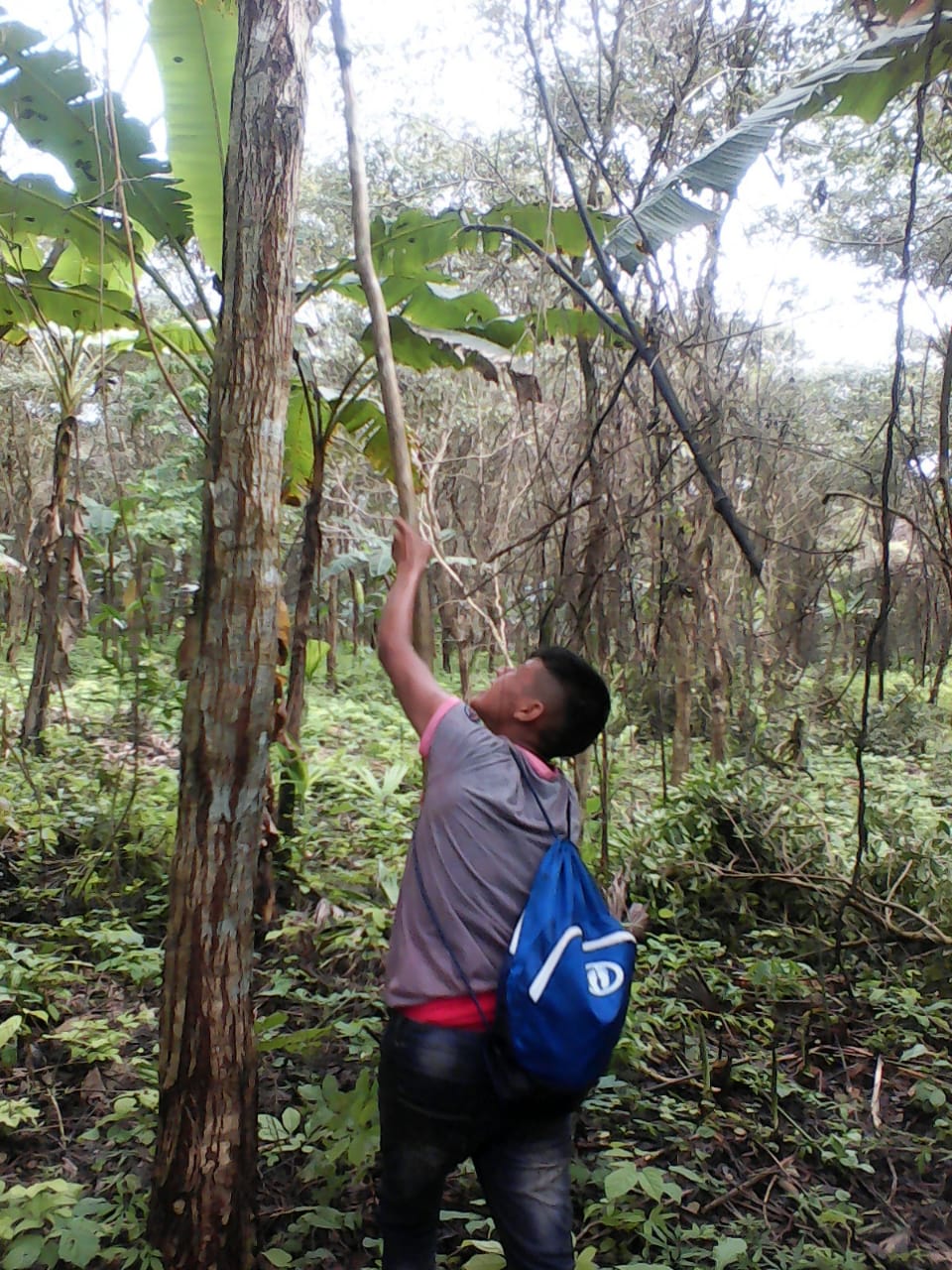
Almendro (Dipteryx oleifera)
A tall forest tree with an immense, straight trunk with rounded buttresses. The bark is yellow colored and densely granular. Leaves are compound, usually with 11-13 leaflets that alternate with one another. The wood is extremely hard, and used in flooring, railroad ties, boat keels, and bridges.
More about Almendro

Balsamo (Myroxylon balsamum)
Tree from 20-40m tall, with large and well formed canopy. Trunk is reddish-brown, and wood is also deep red/brown, changing to purple upon exposure. The wood is rot resistant, and used in the construction of dwellings in indigenous communities, as well as for carpentry and woodworking. The tree's resin has medicinal properties, and is used as ointment, cough syrup, and in the healing of wounds.
More about Balsamo

Cocobolo (Dalbergia retusa)
A medium-sized tree with a straight trunk that is usually cylindrical trunk but somewhat rather irregular, and which frequently branches near the base. The bark has clear vertical fissures. The wood is hard, heavy, and lustrous in color. The indigenous Embera and Wounaan peoples are famous for their fine carvings of native animals. The wood is fine with a reddish brown color, and is naturally oily. Because the tree does not have a straight trunk, cocobolo is used mostly for smaller items like furniture, jewelry boxes, artisanry, and tools. The cocobolo's roots fix nitrogen, which improves soil quality.
More about Rosewood

panama-wood-mahogany.jpg

panama-wood-spanish-cedar.jpg

panama-wood-spiny-cedar.jpg

panama-wood-teak.jpg

panama-wood-yellow-wood.jpg

panama-wood-zapatero.jpg

panama-wood-zorro.jpg













